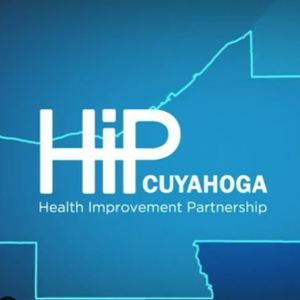For more than 10 years, a group of Cleveland-area collaborators has laid the groundwork for improving health by increasing equity. Building on this foundation, a coordinated effort to understand and address the impact of structural racism in Cuyahoga County, and the systems that underlie it, is underway.
Two Projects with Synergy
In 2020, the CHI Center and community partners embarked on the Cross-Sector Innovation Initiative (CSII), a program of the Public Health National Center for Innovations funded by the Robert Wood Johnson Foundation. CSII set out to improve the community’s health using Community-Based System Dynamics to identify how systems perpetuate structural racism and points at which those systems can be changed.
Also in 2020, the Cuyahoga County Citizens' Advisory Council on Equity (CACE), led by chair Eddie Taylor, began its work to recommend equity goals, strategies, and programs to county government. As part of that effort, the CACE Health and Healthcare Subcommittee, chaired by CHI Center Associate Director Heidi Gullett, identified racism as an urgent health issue and began efforts to operationalize the county’s declaration of racism as a public health crisis.
The potential for synergy between CSII and the work of the CACE soon became clear. “What we’re trying to do is simultaneously address the needs that people have at the outcome level – whether it’s health, criminal justice, quality of life – while also impacting the system for long-term sustainable change toward equity,” Dr. Gullett explained. Given the complexity of community systems and the multiple interventions required for change, both projects required a systems approach.
A Decade of Groundwork
While the opportunity to collaborate across projects for systems and policy change may have been apparent, it was not a coincidence. For more than 10 years, individuals and organizations in Cuyahoga County had been developing relationships, gathering data, and building infrastructure to enable a collaborative systems approach to equity.
- In 2009, Cuyahoga Place Matters explored how inequity and health have been shaped by past development policies, neighborhood planning, and racial discrimination.
- This work grew into a cross-sector, equity-grounded health improvement movement and, in 2014, Health Improvement Partnership (HIP)-Cuyahoga, a consortium for the county’s health and wellness, was formed.
- In 2015, HIP-Cuyahoga, co-chaired by Dr. Gullett and Greg Brown, Executive Director of PolicyBridge, selected structural racism as a priority for its community health improvement plan. Mr. Brown led the consortium in years of work aimed at a multi-level approach to eliminating structural racism.
- Building on their continued investment in relationship-building, HIP-Cuyahoga brought together public health and hospitals to conduct collaborative Community Health Assessments (CHAs) in 2018 and 2019, with another assessment currently underway. Addressing structural racism and trust emerged as top priorities in assessment and prioritizing processes and in the 2019 CHA.
Ongoing Collaboration for Equity
With these rich community efforts as a foundation, CHI faculty member Peter Hovmand led Community-Based System Dynamics processes for CSII and the CACE. He guided discussions, conducted interviews, analyzed historical documents, developed system maps, and oversaw the development of simulation models. These outputs have informed one another, creating deep and still-evolving insights into the systems that underlie structural racism in Cuyahoga County and potential interventions for change. Materials from this work, including three system maps with simulation models and a Systems Thinking Toolkit, are available to the public to advance collective work toward equity.
Although the CSII project formally came to a close in February, its work and the work of the CACE are ongoing. Both projects remain committed to working collaboratively across sectors to apply big-picture systems science thinking for on-the-ground education and policy development.
“We need to be able to understand and employ these methods to ensure we’re providing an equitable quality of life in a community where everyone has an opportunity to thrive. That’s the idea of bringing this together,” according to Dr. Gullett. And, she added, “we’re not just doing this work for an academic exercise; we’re doing this work to catalyze real change.”


